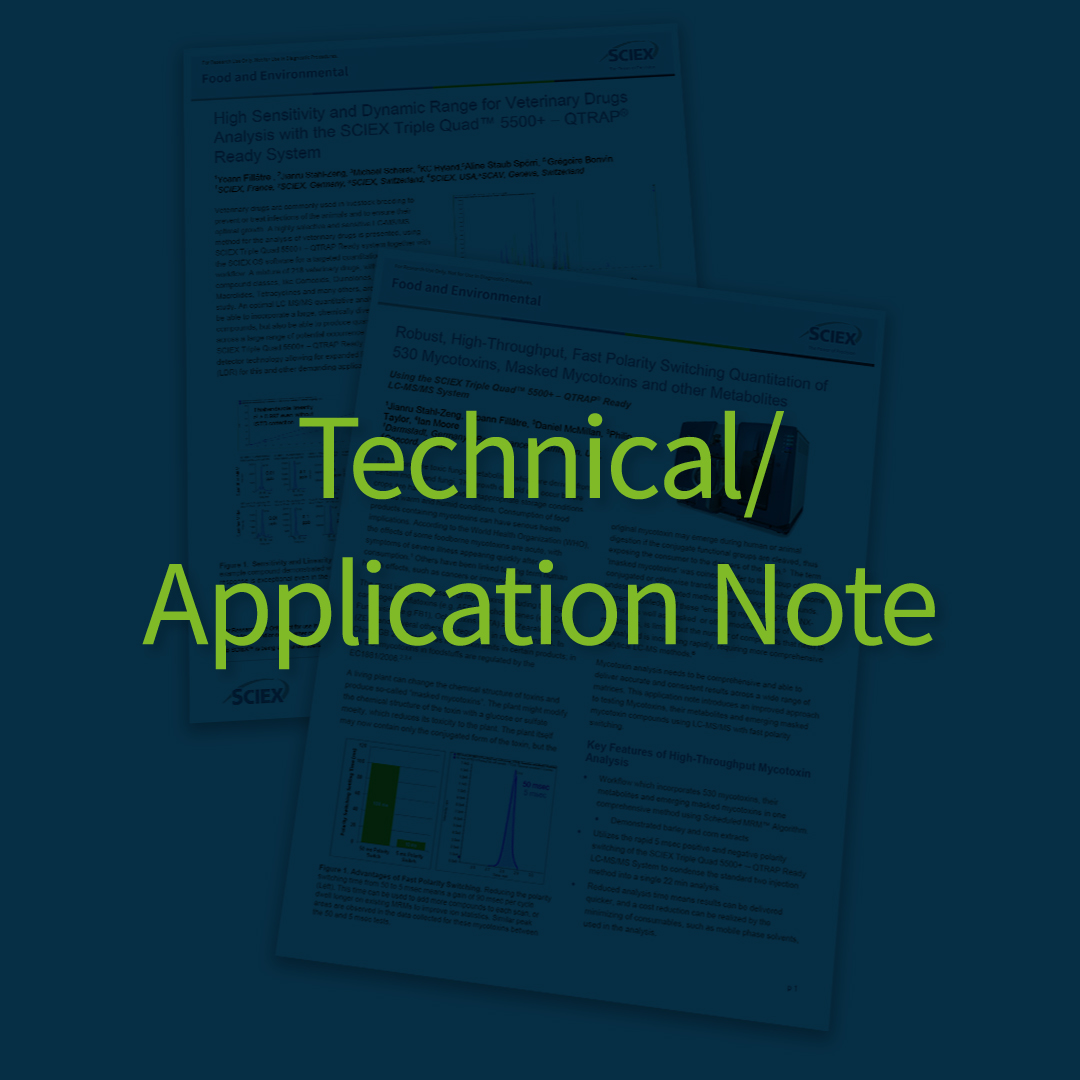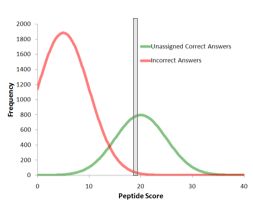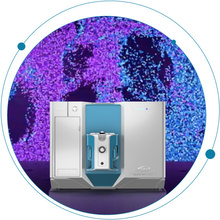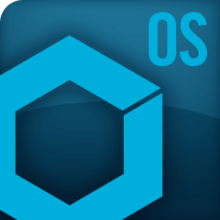The development of analytical methods for the detection and quantitation of drugs and metabolites in a range of biological matrices is a challenging process. Forensic toxicology labs need a reproducible and reliable methodology to ensure the robustness of the data and the quality of the results. They also need robust and sensitive instrumentation that can detect drugs at trace levels with high specificity, especially when it comes to novel psychoactive substances (NPS), which can be difficult to monitor and control.
Tags
Unlock the benefits of nominal mass spectrometry for NPS analysis
The development of analytical methods for the detection and quantitation of drugs and metabolites in a range of biological matrices is a challenging process. Forensic toxicology labs need a reproducible and reliable methodology to ensure the robustness of the data and the quality of the results. They also need robust and sensitive instrumentation that can detect drugs at trace levels with high specificity, especially when it comes to novel psychoactive substances (NPS), which can be difficult to monitor and control.

What has the Echo® MS system done for the pharma industry? (And don’t just take our word for it!)
SCIEX was very proud to have an illustration of the Acoustic Ejection Mass Spectrometry (AEMS) technology that powers the Echo® MS system on the front cover of the Journal of the American Society for Mass Spectrometry in January 2023. The associated article—Ultrahigh-Throughput Intact Protein Analysis with Acoustic Ejection Mass Spectrometry—was co-authored by scientists from SCIEX and Merck.
Methods for OPI electrode cleaning for Echo® MS system electrodes
Depending on the samples you are running on the system, it is possible for the Open Port Interface (OPI) electrode to become dirty or occluded over time. Below are two different cleaning strategies that can help you maintain your Echo® MS system and keep your OPI...
Current proteomics software compatibility for ZenoTOF 7600 system
Below is a summary of various other software packages that are useful for processing proteomics data from the ZenoTOF 7600 system. Note this list is not comprehensive and only covers the tools we have lightly tested to date. Acquisition Type Software Files needed...
Using Scheduled Ionization to reduce system ion load for proteomics data acquisition
When analyzing highly complex samples from biological matrices, there can be significant amounts of material that elute in the wash cycle of the LC run, depending on the up-front sample preparation used. The Scheduled Ionization mode, available in both SCIEX OS...
Excel macro for calculating averages or percent CVs from replicates in a 384 -well plate
This excel workbook is designed to be used with data copied from a SCIEX OS software Analytics module results file
Excel macro for plate building for transformation of 96-well to 384-well plates with generation of batch lists for SCIEX OS software
This macro-enabled workbook is designed to help with creating a formatted analysis list for the Echo® MS system, using 96-well plate maps or lists
How to optimize sample plating to run Echo MS system in ‘Fast acquisition mode’
The Echo MS system can acquire data extremely rapidly, at 1 second per sample. To achieve this speed, it should be ensured that there is adequate time between ejections for the analyte signal to return to baseline between ejections. Plating your samples such that you...
How do I check the quality of the Auto Retention Time Calibration used in my Extractor processing?
When using the Auto-Calibration option in Extractor, a set of retention time calibration peptides will be determined automatically from the library and used for RT calibration. To determine how the fit looks for the calibration on each datafile, follow these steps....
MRM method transfer from a SCIEX Triple Quad or QTRAP 6500+ system to the SCIEX 7500 system
General recommendations when beginning method development Objective: The purpose of this document is to provide a quick reference for transferring MRM-based quantification methods from a SCIEX Triple Quad or QTRAP 6500+ system to a SCIEX 7500 system. While the best...

Reducing PFAS interferences during human plasma and serum analysis with accurate mass spectrometry
High level method optimization considerations for Echo MS system
While an in-depth discussion of method development and optimization for the Echo® MS system is beyond the scope of a community post, here are some points to consider as part of the process: The maximum recommended ion spray voltage for prolonged electrode life is 5000...
sMRM Concurrency Calculator
This excel sheet allows you to quickly estimate the MRM concurrency and approximate dwell time for your Scheduled MRM Algorithm acquisition method. Paste your MRM method with retention times into the input tab then calculate the Excel workbook. Plots will update to...
Standard addition workflow – for quantification and calculating background levels
The method of standard addition is a quantitative analysis approach used in situations where matrix effects from complex samples contributes to the analytical signal. This makes it impossible to compare the analytical signal between sample and standard using a...

Understanding MS1 Peak Intensity in ProteinPilot software
The “Intensity (Peptide)” values come from LCMSReconstruct, in ProteinPilot software 5.0. It maps the RT, m/z, intensity MS1 surface to find the peak information for the peptide. The Intensity (Peptide) is a weighted sum of the heights of the isotope series at the...

What is the difference between a rapid and a thorough search in ProteinPilot software?
When setting up your search in ProteinPilot software, you select either a Rapid Search or a Thorough Search in the Search Effort section. This setting determines which parts of the algorithm will be invoked and effectively how deep into your sample you will search to...

What are my normalization options in MarkerView software and when should I use them?
In an LC-MS experiment there are multiple sources of variance that can confound the quality of your results. This variation can be biological e.g. differences between treated and control groups, but can also be non-biological, usually from small variations in...

Computing protein confidence with improved accuracy by reassessing peptide confidence during protein grouping
ProteinPilot software 4.0 and higher releases include a new method for calculating protein confidences that improves reliability at the end of protein lists. Figure 1 shows a simulated example that demonstrates how more accurate protein confidence is computed. Figure...

What’s in your citrus oil?
Craig Butt explains a non-targeted omics approach to characterizing and profiling compounds in citrus oil Read time: 4 minutes There is increasing interest among consumers in the benefits of natural products containing citrus beyond the traditionally known benefits of...

Breaking down the SCIEX Triple Quad™ 7500 LC-MS/MS System – QTRAP® Ready
Sensitivity and robustness carry different meanings in the world of mass spectrometry. Generally, sensitivity refers to an instrument’s ability to achieve lower limits of detection (LOD). Robustness, on the other hand, refers to an instrument’s ability to consistently...

Importing acquisition methods from Analyst software to SCIEX OS software
The SCIEX Triple Quad 7500 system is the first nominal mass instrument to be released completely on SCIEX OS software. Moving to a new software solution can be time consuming with the need to transfer numerous methods to the new platform. SCIEX OS software helps...

A rising star in food allergen research: proteomics of shellfish allergen
It’s important to know what you’re eating, especially if you suffer from a food allergy.
About 220 million people worldwide live with a food allergy.1 These numbers, along with the complexity and severity of conditions, continue to rise. In America, there are about 32 million food allergy sufferers—5.6 million of those are children under the age of 18.2.2 That’s 1 out of every 13 children, or about 2 in every classroom. From a financial perspective, the cost of food allergy childcare for US families is up to $25 billion



 Contact Support
Contact Support